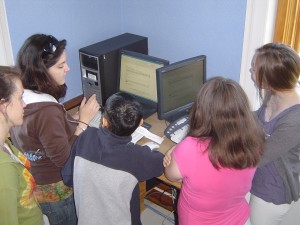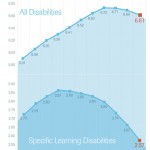September 1, 2010
by Charles Rathbone
0 comments
David and Roger Johnson, one a counselor educator, one a special educator, set out in the early 1970s to define and refine the successful practice called cooperative learning. Embraced by special educators, cooperative learning as a task structure became a major tool to achieve the integration of students receiving special education services under PL 94-142 into regular classroom settings without sacrificing the integrity of the academic program. Other task structures, individualized learning and competitive learning, usually led to inequitable achievement outcomes. Cooperative learning, when done well (as the Johnsons advised) usually meant every student learned more than they would either doing the work alone or in traditional ability grouped fashion.
Cooperative Learning groupwork has become a mainline instructional practice used by all educators who want to promote high rates of learning for all students, most especially those students at the margins. Many of the attributes of good cooperative learning fall within the three principles that guide the design of Universal Design for Learning practices advanced by CAST and the Universal Design for Learning Project at UVM. Regardless of the target audience, all cooperative learning activities must adhere to the basic criteria for effective cooperative learning as set down by David and Roger Johnson in the early 1970s: positively interdependent tasks, face to face interaction, group processing, individual accountability, and the learning of small group and interpersonal skills.
Others have carried out lines of research into the effectiveness of cooperative learning task structures that can be helpful to us. Of particular interest to me is the work of Elizabeth Cohen and Rachel Lotan of the Program for Complex Instruction at Stanford University. Cohen and Lotan used expectations states theory, a theoretical base for understanding small group interaction based in sociology, and created an approach to planning cooperative group work endeavors called Complex Instruction. Their addition of status theory to the basic criteria laid down by the Johnson’s in the 1970s is a helpful addition to teaching teachers how to plan, teach, assess, and understand cooperative learning activities.
It takes time and training to become an effective cooperative learning educator. To think that higher education professors could be successful cooperative educators by virtue of their advanced degrees is patently absurd. Deep content knowledge has little in common with deep pedagogical knowledge. To teach group work practices successfully requires familiarity with what cooperative learning is and how to use cooperative learning practices in the college classroom with late adolescent / young adult learners. We have much to learn about how to do this, how to teach college professors how to use cooperative practices. But we have very broad shoulders upon which we can stand. To get us started, I’d like to offer this set of observations.

Observations Regarding Effective Groupwork in College Classrooms
1. Knowing how to work in a group is not an inherited trait. Successful group practices can be taught.
2. Effective group work has both task and interpersonal requirements. Students need to know how to negotiate both sets of issues.
3. Small groups naturally evidence a range of ability for any given task.
4. The nature of a group task affects how well a group can work collaboratively.
5. Teachers need to take class time to orient students to collaborative projects and practices.
6. Group work should be graded on a point system.
7. Posting realistic benchmarks increase the quality of student work.
8. Permitting students to put their own particular “spin” on a group product will increase student motivation to do their work well.
9. Being honest with college students about the particulars of cooperative learning procedures is the best path to follow. Honesty is key to helping the groups solve their own unique issues of working together.
10. Group work usually takes longer than teachers want it to.
11. Small groups are better than big groups.
12. Heterogeneous ability groups are preferred over homogeneous ability groups.
13. Good group work needs to be publicly recognized.
14. Presentation skills are different from groupwork skills. If you want good presentations, teach and model good presentation skills.
15. College departments should be responsible for promoting the skills and knowledge for working productively and gracefully in a group setting in their coursework.
16. The majority of college students come to college having had negative cooperative group experiences in secondary education.
C. Rathbone
UDL@UVM
September 1, 2010



